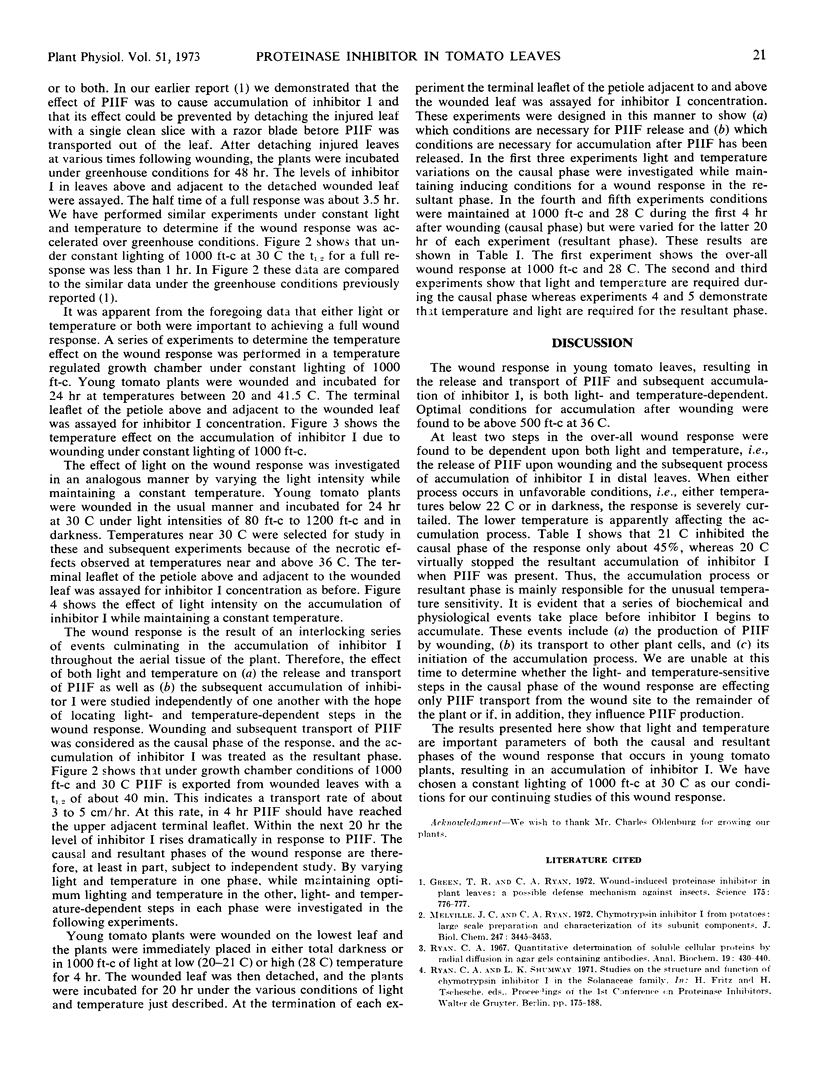Abstract
Wounding of single leaflets of young tomato (Lycopersicum esculentum var. Bonnie Best) plants causes the release of a proteinase inhibitor inducing factor. This factor is rapidly transported throughout the plant where it causes accumulation of inhibitor I, a potent inhibitor of several serine proteinases from both animals and microorganisms. The wound-induced accumulation of inhibitor I is both light- and temperature-dependent. In total darkness no accumulation results from wounding. The accumulation exhibits a linear dependence upon light up to 300 foot candles. At 600 foot candles and above, the response is maximal. In light the wound response possesses an unusual temperature dependence with an optimum rate of accumulation near 36 C. Below 20 C no accumulation occurs. The over-all process contains two light- and temperature-dependent steps, one involving wounding and transport, the other involving accumulation.
Full text
PDF


Selected References
These references are in PubMed. This may not be the complete list of references from this article.
- Green T. R., Ryan C. A. Wound-Induced Proteinase Inhibitor in Plant Leaves: A Possible Defense Mechanism against Insects. Science. 1972 Feb 18;175(4023):776–777. doi: 10.1126/science.175.4023.776. [DOI] [PubMed] [Google Scholar]
- Melville J. C., Ryan C. A. Chymotrypsin inhibitor I from potatoes. Large scale preparation and characterization of its subunit components. J Biol Chem. 1972 Jun 10;247(11):3445–3453. [PubMed] [Google Scholar]
- Ryan C. A. Quantitative determination of soluble cellular proteins by radial diffusion in agar gels containing antibodies. Anal Biochem. 1967 Jun;19(3):434–440. doi: 10.1016/0003-2697(67)90233-3. [DOI] [PubMed] [Google Scholar]


